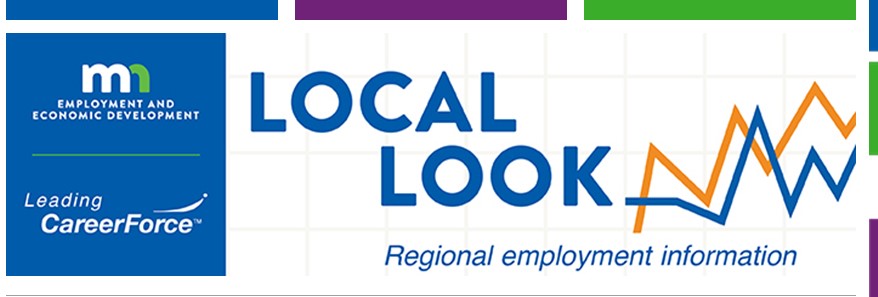
While Minnesota was still seeing job growth in recent years, the extremely tight labor market had been constraining employers across the state. However, it is likely that any overall trends in employment present before April 2020 have been permanently subsumed, and that the month will mark the beginning of a mostly new set of trends in our labor markets.
Over the next year, Minnesota is expected to recover roughly 43% of the 343,000 wage and salary jobs lost during the second quarter of 2020. The job rebound between the second quarters of 2020 and 2021 after an initial spurt is expected to be bumpy, given the unknown path of the virus over the next 12 months. Hard hit sectors such as accommodation and food services, arts and entertainment, and personal services will initially rebound the quickest, but then slow as demand is expected to remain below pre-pandemic levels due to uncertainty about face-to-face interaction.
More than 660,000 Minnesota workers applied for Unemployment Insurance between March 16 and May 17, representing a staggering 21.6% of Minnesota’s labor force. However, the employment impacts of COVID-19 on Minnesota’s workers have not been distributed evenly, neither by geography nor type of work. While much of north central and northeastern Minnesota saw much higher shares initially, the southern and western regions saw significantly smaller portions of their labor forces apply for unemployment benefits.
Following the fastest initial surge of UI claims of the six regions in the state as measured by percent increase week over week, Northwest Minnesota then saw a faster decline in initial claims than other regions of the state through mid-May. As the initial response to COVID-19 transitions into a reopening and recovery phase, it is important to consider the populations that have been disproportionately impacted by the economic shocks due to this pandemic.
The Arrowhead region has the largest share of food prep and serving occupations, the second largest share of health care occupations, and the third largest share of sales occupations among all six planning regions in the state. Not surprisingly, Northeast exhibited the highest share of claims in large part because of the high concentration of job losses in the hospitality, sales and health care fields.
With the global economy suffering a sudden and unexpected negative shock from the COVID-19 pandemic, Central Minnesota’s economy could not escape the virus – or the fallout from efforts to slow its spread.
After 10 years of strong employment expansion, the COVID-19 pandemic has already resulted in and will continue to cause significant changes for the Metro Area labor market.
Southwest Minnesota showed the smallest impact from layoffs of the six planning regions in the state. In comparison to past years, Southwest Minnesota is seeing relatively small shares of UI applications from production workers, especially those in the region’s major manufacturing sectors like food manufacturing, machinery manufacturing, and printing.
Between March 16 and May 16, over 53,000 workers had filed applications for Unemployment Insurance in the 11-county Southeast Minnesota planning region. The region has never seen numbers like this before, making it difficult to put these numbers in perspective in comparison to past years.